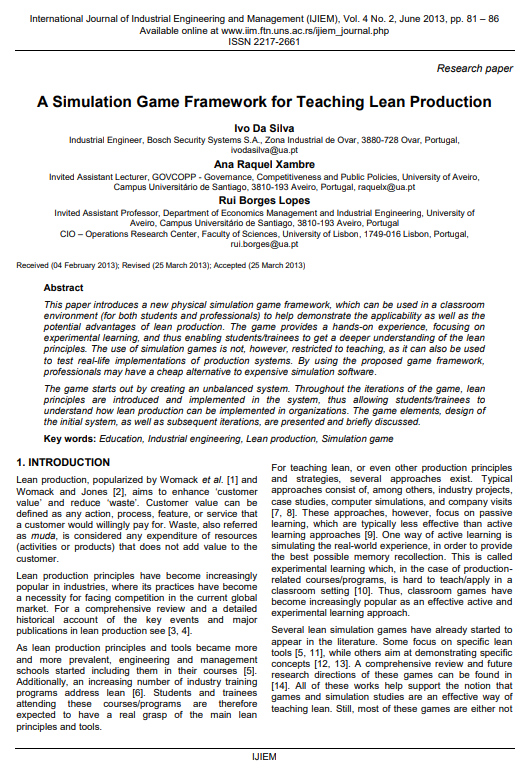
Published 2013-06-30
abstract views: 46 // FULL TEXT ARTICLE (PDF): 0
Keywords
- Education,
- Industrial engineering,
- Lean production,
- Simulation game
How to Cite
Copyright (c) 2023 International Journal of Industrial Engineering and Management

This work is licensed under a Creative Commons Attribution 4.0 International License.
Abstract
This paper introduces a new physical simulation game framework, which can be used in a classroom environment (for both students and professionals) to helpdemonstrate the applicability as well as the potential advantagesof lean production. The game provides a hands-on experience, focusing onexperimental learning, and thus enabling students/trainees to get a deeper understanding of the lean principles.The use of simulationgames is not, however, restricted to teaching, as it can also be used to test real-life implementations of production systems. By using the proposed game framework, professionals may have a cheap alternative to expensive simulation software.The game starts out by creating an unbalanced system.Throughout the iterations of the game, lean principles are introduced and implemented in the system, thus allowing students/trainees to understand how lean production can be implemented in organizations. The game elements, designof the initial system, as well as subsequentiterations, are presented and briefly discussed.
Article history: Received (04 February 2013); Revised (25March 2013); Accepted (25 March 2013)

